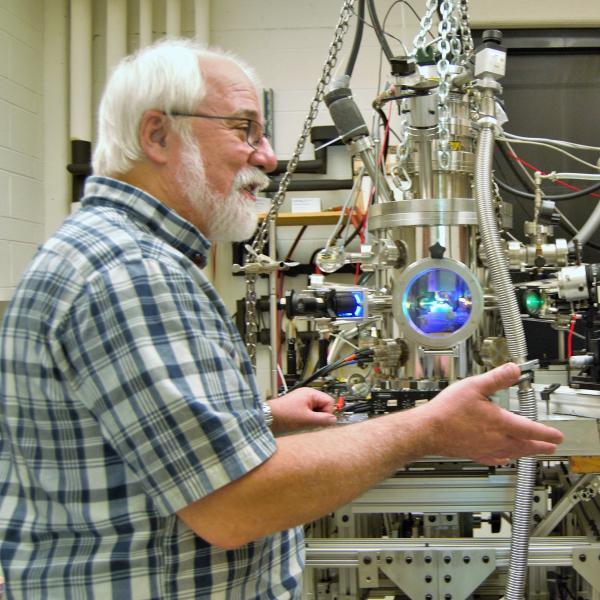Anne M. Hofmeister's research interests include heat and radiative transport, thermodynamics, gravitation, spectroscopy, and application to large bodies.
Evolutionary behavior on diverse scales is driven by the force of gravity, which brings objects together, and heat transfer from warmer to cooler bodies, which has contrasting dispersive effects. Hofmeister’s research involves probing the nature of heat and light, which are dynamic entities, yet physical models focus mainly on static behavior. Tools used are analytical mathematics, compilation and analysis of large data sets, and spectroscopic and heat transfer measurements. As validation and refutation are essential to science, a focus is testing theory against available and new data. The underlying motivation is to improve understanding of complex phenomena relevant to the Earth, Planetary, Astronomical and Materials Sciences.
Hofmeister’s new mechanism for plate tectonics centers on gravitation forces and torques experienced by the Earth in the three-body Sun-Earth-Moon system, and the effect of spin on the layered Earth. In her work, she explains that large scale motions arise from forces, and that plate tectonics (lateral forces) differ from volcanism (vertical buoyancy). Her proposal does not require large internal heating beyond known radiogenic sources or primordial estimates, and greatly differs from the mantle convection hypothesis. To hear more, listen to this podcast on CBC “Quirks and Quarks” radio show.
Another important finding, also in collaboration with R.E. Criss (WU) and E.M. Criss (H10 Capital), is that Newtonian gravitational forces near and inside non-spherical shapes are neither directed towards object center nor are proportional to the inverse distance squared. Non-centrality of forces pertains to ascertaining masses of oblate planets and galaxies, as well as precession and evolution of orbits.
Regarding materials and microscopic behavior, her work explains how thermal expansion of a solid arises through work performed during incremental absorption of heat. The new thermodynamic formula links thermal expansivity, specific heat, density, and Young’s modulus. It should find use in designing materials, because strength (rigidity) competes with thermal response in many applications.
A special issue edited for the journal Galaxies in 2020 “Debate on the Physics of Galactic Rotation and the Existence of Dark Matter,” is summarized online with a video introduction. This contains three inverse models that quantitatively explain galactic rotation without invoking enormous, ad hoc amounts of dark matter.
Since 2019, Hofmeister published two books “Measurements, Mechanisms, and Models of Heat Transport” and “Heat Transport and Energetics of the Earth and Rocky Planets”





